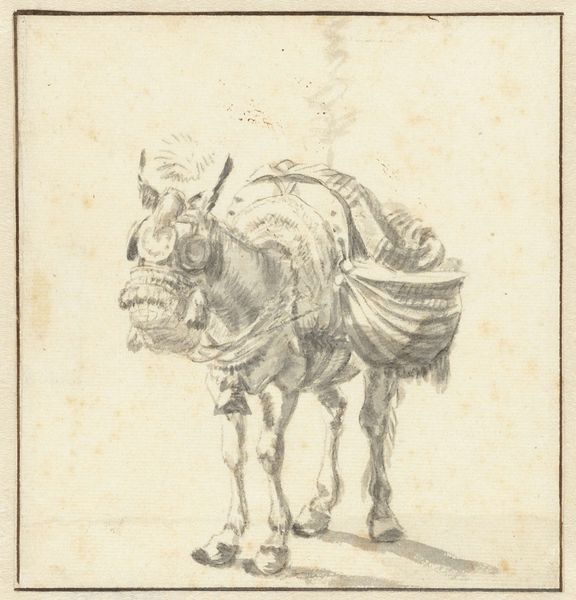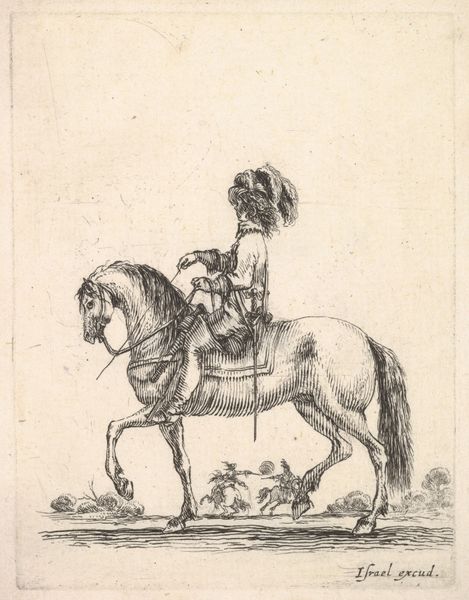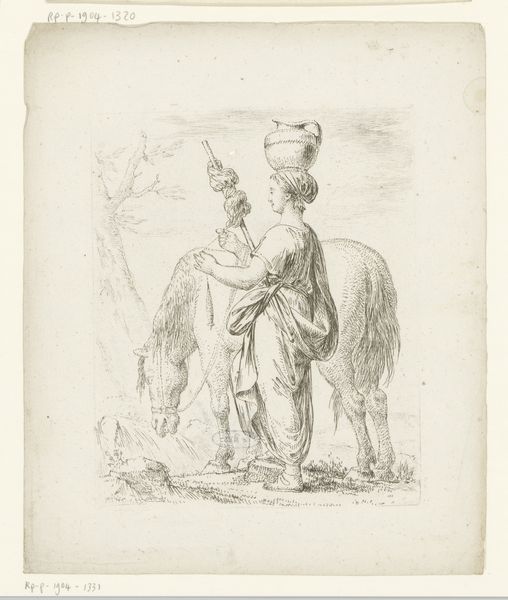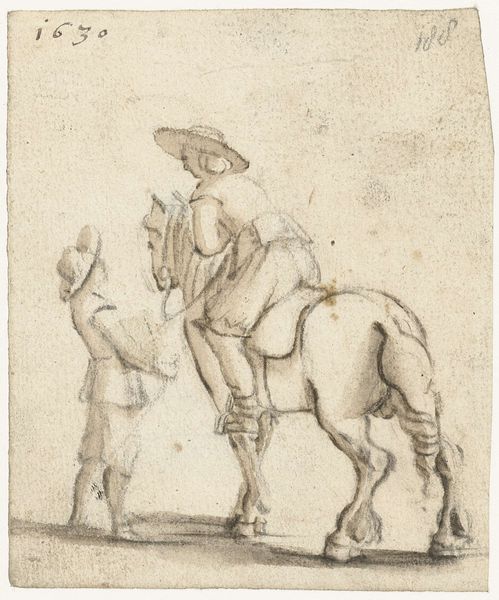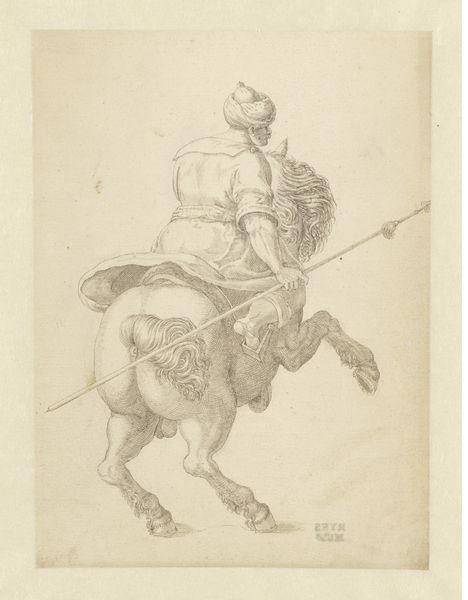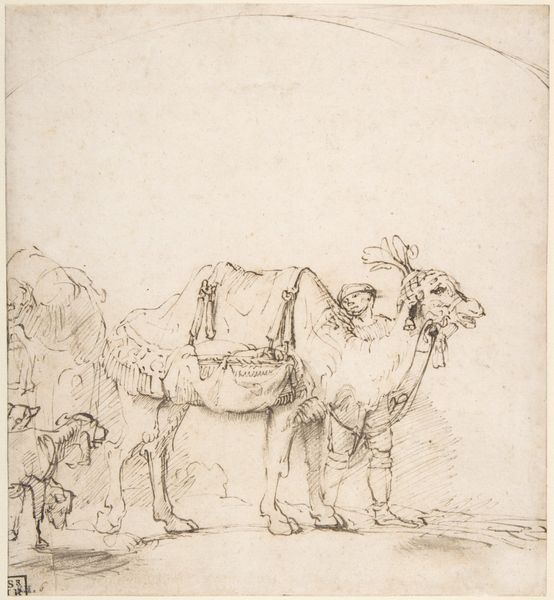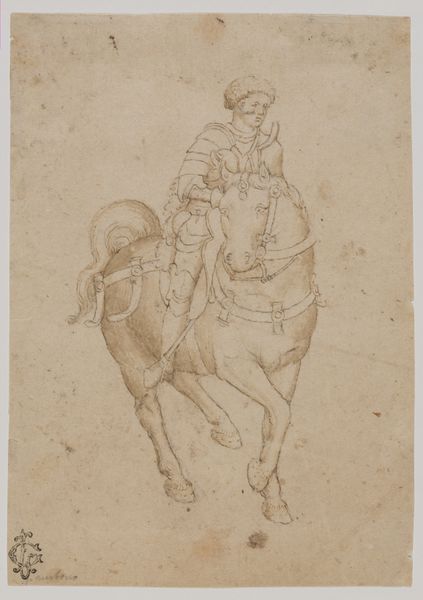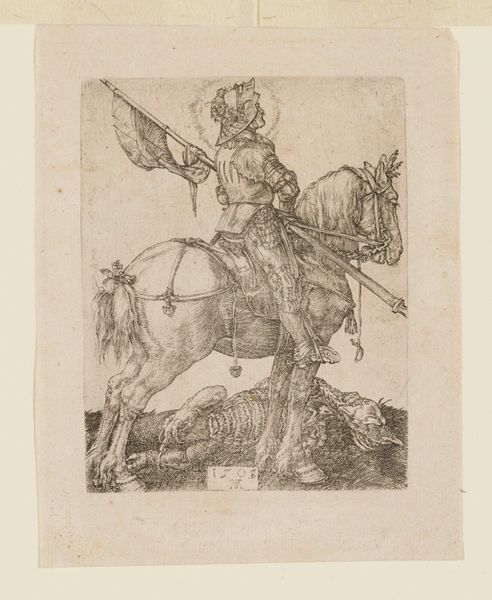
drawing, print, paper, pencil
#
drawing
#
baroque
#
animal
#
dutch-golden-age
# print
#
landscape
#
paper
#
pencil
#
realism
Dimensions: sheet: 6 1/8 x 4 15/16 in. (15.6 x 12.6 cm)
Copyright: Public Domain
Curator: Welcome. We're looking at a red chalk drawing titled "A Donkey" by Adriaen van de Velde, created sometime between 1645 and 1672. It's currently held here at The Metropolitan Museum of Art. Editor: The piece has a striking simplicity. The red chalk on paper gives it warmth, but also a feeling of directness, almost like a quick sketch capturing the essence of this working animal. There is a heavy shadow below the feet; the drawing overall inspires humility. Curator: Van de Velde was, of course, part of the Dutch Golden Age, a period marked by incredible artistic output. He was particularly known for his landscapes and animal studies. These were often incorporated into larger, more complex compositions, often depicting scenes of everyday life. Editor: The depiction of labor in these works is important. Van de Velde isn't just painting a picturesque scene. The animal looks weighted down. It begs a deeper question: What did it mean to depict animals in the context of labor and commerce during the Dutch Golden Age? Curator: Precisely. Dutch Golden Age paintings frequently idealized rural life, sometimes omitting the harsh realities faced by working-class individuals and animals alike. Van de Velde often presented scenes from wealthy properties. In paintings, these elements add an aura of rural tranquility that would've resonated with urban collectors. Editor: The way the animal's form is rendered, that soft focus that is achieved with chalk – it almost feels sympathetic. It’s a departure from, say, the aristocratic portraiture of the time. Could we read this as a quiet commentary on the lives of working animals and by extension perhaps the people of the Dutch Golden age? Or, is that simply my own projection? Curator: It's a worthwhile contemplation. The market for such drawings suggests that viewers appreciated their level of craft. They weren’t simply sketches; these works reflected artistic skill and perhaps even a moralizing vision. We can find the drawings functioning as independent art pieces or reproduced as prints. Editor: The quietness of the image really resonates, it also inspires me to consider human responsibility in labor management. Curator: Indeed, looking closer certainly invites us to consider broader social implications. Editor: Thanks for that, and your attention everyone. Curator: Our pleasure, until next time.
Comments
No comments
Be the first to comment and join the conversation on the ultimate creative platform.

